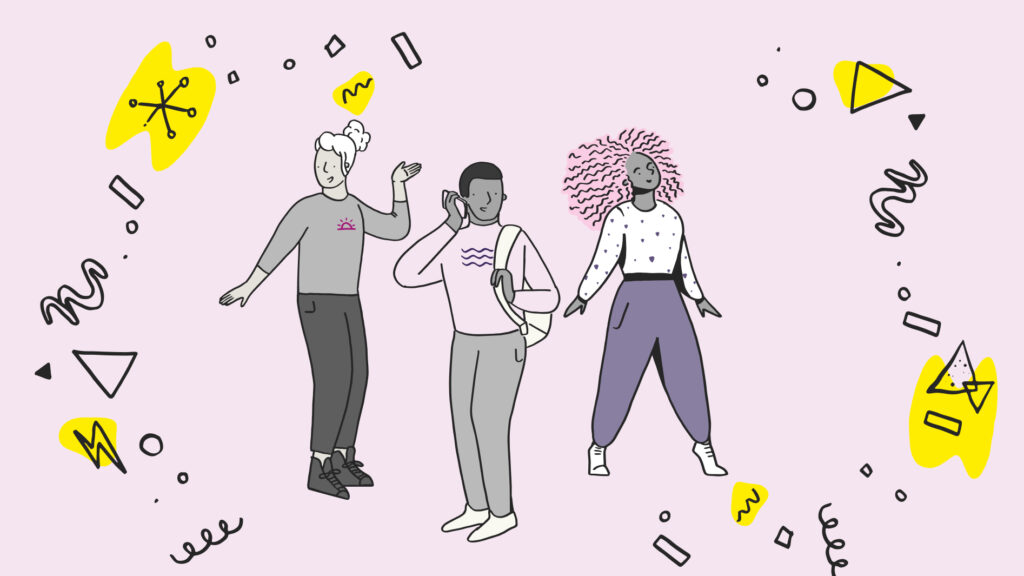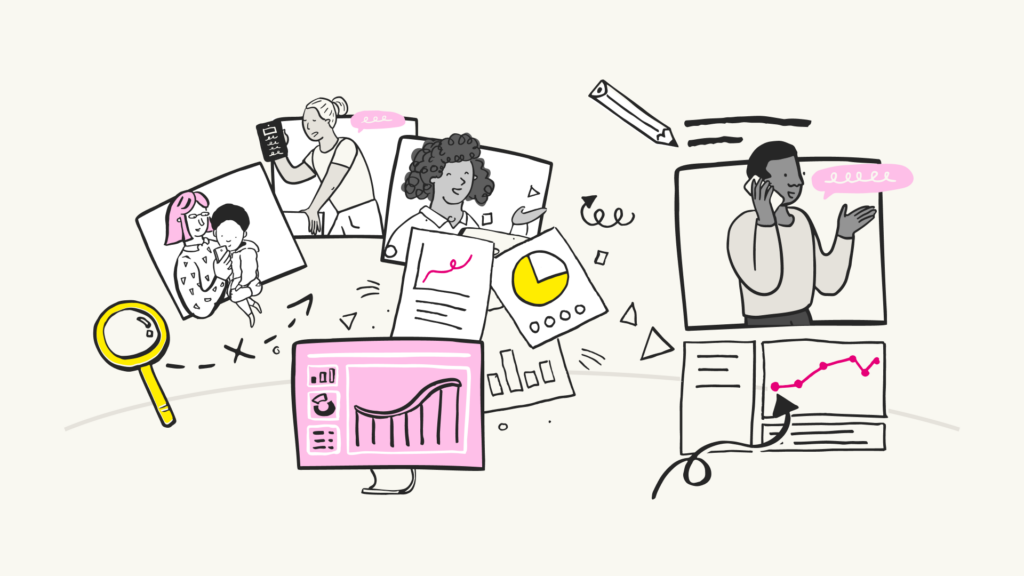Companies and digital teams operate at various levels of maturity; understanding what ethnographic research is and when (and when not) to employ it is important when striving for digital excellence. Hopefully this blog will help you get there.
What is ethnographic research?
Put simply, ethnographic research is about going into peoples’ natural environments and observing their behaviour. It provides rich and deep user insights, but it is often overlooked and underused, due to several reasons that will be explored here.
Ethnography has its basis in anthropology (the study of humans). You may be familiar with social anthropology; wherein researchers integrate themselves into tribes and cultures that are potentially poorly understood, and then report their findings back to the rest of the world.
The description of these studies is known as ethnography, which is defined as ‘the scientific description of peoples and their cultures.’ Typically, the ethnography comes in the form of a report, but it could also be presented as a series of photographs, or even poetry, that describes the insight.
The aim of ethnography is to study society through the eyes of another, making it the ultimate user-centred design approach. Without this kind of thinking, you walk through life with an ‘ethnocentric’ view of the world, wherein you view everything through the lens of your own experience. This is why accessibility can often be neglected and why diverse teams often produce more diverse solutions and generate better returns.
Ethnographic research is about understanding people, their environments, and the effect those environments have on their behaviour. If you’re evaluating a product or a service, seeing how this is used in a typical environment – rather than the artificial setting of a laboratory – provides richer data and a deeper understanding.
Ethnographic research as a term in the field of experience design has come to mean in-context research or contextual enquiry. It’s been used in the UX community to cover anything observation related, but in its truest sense, it’s more about wholly non-obtrusive methods of observation and interpretation.
To be clear, we’re not advocating for months of study every time you do user experience research, becoming at one with the environment and blending into a new societies (unless you want to). But it is a great tool to understand and have in your pocket for the right kind of projects.
When to use ethnographic research
Some might argue that ethnographic research should be mainly used when identifying problems, or trying to explore the problems you know about. This is understandable. At this stage, you’re still examining the problem space, and miscalculations based on research done outside of the natural environment could be very costly.
At the discovery stage you’re aiming broad (divergence), before homing in on the problem definition (convergence). Ethnographic research is what helps you go broad, because you’re able to look at far more than in just lab testing. It is also better suited to some problems than others. Wider ranging and more complex problems work better than specific and detailed ones, which could easily be explored using cheaper methods. Domain complexity might also justify it, in cases such as healthcare.
That’s using ethnographic research to explore the problem space. However, it can be used to explore solutions already within the design pipeline.
We recently ran a research study for BookTrust on their live website. We supplemented a number of lab sessions with six in-home sessions, exploring natural usage and the scenarios that just wouldn’t be picked up in the lab. We specifically wanted to use a more ethnographic style study in this case as we were sure that usage would be different in-home, especially as our user-base was parents of young children.
What we found justified the approach. Usage changed and therefore the implications for BookTrust changed after we used more free-ranging, discovery-style interviews in-home. For example, we spoke to one new mother who was breast-feeding during the session.
This is when she would realistically be using the site and it had a pronounced effect; she only had one hand free, her attention was shot to pieces and she struggled in ways that fully-focused lab participants did not. Children ran in and out during sessions and the environment played a greater role than it normally would.

Ethnographic research can help reveal situational accessibility issues
Why you should use ethnographic research
As mentioned above, ethnographic research gives you a lot of breadth, but it also gives you a great deal of depth and delivers insightful data. You’ll find out more about your users’ behaviour and more about them as people, helping you to understand them so much better, which in itself is a hugely valuable.
Things can be missed in lab sessions; they’re out of context and the usual memory queues aren’t present. It’s an unfamiliar environment. Ethnographic testing pushes your thinking into areas you hadn’t considered before, meaning you’ll uncover issues you never expected to find.
It’s also the single most interesting type of research there is. Going into peoples’ homes, going on their commute… for anyone with a background in psychology, or with an interest in humans in general, this is so rewarding. Lab testing can feel like a production line and this is a chance to do something different.
Ethnographic research factors to consider
Expense
It is more time-consuming and therefore more expensive. Rather than running six lab sessions in a day, with ethnographic research and the travel involved you might only be able to run two or three longer sessions in a day. Therefore, it’s something you might do in combination with other methods or in short bursts.
But as with any research, time taken will vary depending on the goals of the research; it doesn’t have to be a very long, elaborate process. For BookTrust we ran six of these sessions with another 21 lab sessions; this meant that the contextual information that we picked up throughout the in-home sessions added extra colour and context to our findings.
It’s also important to mention that if you don’t do it, you could incur more expense later in the project because you missed key data points or moved forward with an incomplete understanding.
Skillset
It’s not the same as lab sessions, so you have to be a very flexible facilitator. Using more experienced researchers makes more sense than using people new to research or just finding their feet. A lot of this comes down to confidence; it’s difficult to predict where you might be exactly and there’s so much outside of your control.
For instance, where are you going to sit? Are you even going to be able to sit? How you take notes and how you set the technology up with all need to be considered as soon as you get going, and you’ll need to improvise. Especially when something inevitably doesn’t go to plan.
Furthermore, as well as flexibility around setting up and running the session, you’ll need to be more flexible when asking your questions and knowing what to probe. You need the ability to recognise that something is interesting and worth pursuing and this kind of skill tends to come with experience.
Technology
How will you record the sessions? Or rather, how will you set the session up so you can see exactly what’s going on? This will depend on what you’re faced with. For example, on BookTrust, we were in-home, and so connected whichever device the participant preferred to use (mobile or tablet), which then displayed onto a laptop. This meant the facilitator could observe there, rather than rely too much on looking over their shoulder. Also, buy gum. And probably avoid garlic the day before.
Included in this is note-taking. You won’t be able to rock up to someone’s home with a team of people (like you might have in an observation room), so you need to think through how you’re going to take notes, if at all, or if you plan to go back through videos after – knowing that the video might not be perfect, and it will add more time. It will probably be a combination of the two.
If you’re interested in taking your user research and insight to the next level, take a look at our UX services.
Related reading
We drive commercial value for our clients by creating experiences that engage and delight the people they touch.
Email us:
hello@nomensa.com
Call us:
+44 (0) 117 929 7333




